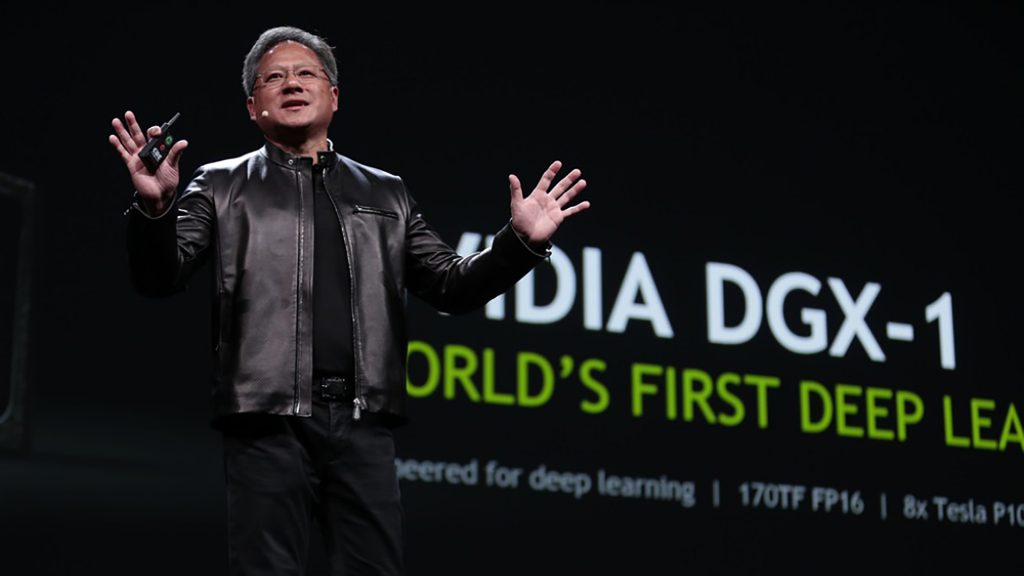Key Takeaway
To understand what hardware giant Nvidia is planning for next, competitors and startups playing in the space can look to the online breadcrumbs they’re leaving behind. Here’s a look at how Outside Insight can be used to gather forward-looking insights about one of the biggest players in the AI space.
What’s next for Nvidia?
The hardware giant is significantly ramping up hiring for AI and deep learning engineers. Out of 124 current openings in the US, for instance, over 33% contain the term “artificial intelligence”. Competitors in the industry looking out can analyze external indicators, from specific skillsets in which they’re investing, to new partnerships and product launches, to a focus on new divisions, to determine what their next steps might be and devise a strategy accordingly.

Nvidia just announced a major innovation in AI – the Jetson Xavier AI chip – which packs $10,000 worth of power, through six processors which can run 30 trillion operations per second. This is 20x more powerful than its existing AI chips, and will be used to power robots of the future. And it’s aimed at a rather digestible price point – a development kit will start shipping in August from $1,299. Competitors will want to keep an extremely close eye on Nvidia’s next steps to determine future applications for this technology that might reach into new industries.
Meanwhile, another recent release – Nvidia’s new supercomputer called the HGX-2 – is being hailed as the fastest single computer ever built, according to Digital Trends. It comes armed with two petaflops (!) of computing power and is designed specifically to aid in the AI and data processing industries. “It is said to be capable of replacing as many as 300 CPU-driven servers on its own, offering a much more powerful and compact computing solution for data-driven tasks.”
The brand is also working hard to align itself with key partners in the thought leadership space – potentially to establish a pipeline for future team members. Last month, they announced a further partnership with Booz Allen Hamilton to train thousands of developers through an executive deep learning and data-driven solutions training course, squarely positioning themselves as experts and authorities in the field. Called “Deep Learning Demystified”, the course will be taught by certified Deep Learning Instructors who have been working on solutions in cyberdefense for government, and for commercial clients.
Previously, the firm had been focusing on advanced new technology that could enhance self-driving cars. Last year, Nvidia researcher Ming-Yu Liu told The Vergeabout the firm’s AI framework that “lets computers imagine what a sunny street looks like when it’s raining, snowing, or even pitch-black outside.” This technology is more advanced than other generative adversarial networks (GANs) on the market and could have applications reaching much farther than self-driving cars. However, following the crash of Tesla’s and Uber’s autonomous vehicles, they shifted focus from testing vehicles in real life to solidifying the hardware that will power these autonomous systems.
Consumer satisfaction in gaming industry leaves much to be desired
But in terms of customer satisfaction, particularly in the consumer space, the company has some wrinkles to iron out. It appears the industry as a whole is facing issues around high prices and low availability for graphics cards commonly used by gamers, and customers are less than pleased. In order for this to change, focus will need to shift to producing more affordable graphics cards at scale.

It’s no surprise, then, that AI engineers continue to sit at the focus of Nvidia’s human resources. A little deeper digging can reveal what exactly those engineers will be focusing on and the particular skillsets they’re investing in, which can indicate where the tech giant’s strategy is heading next.
This is particularly key for newcomers in the space who can be more agile and disruptive. There’s a major focus on AI chips right now, with startups like Hailo, who has raised $16M for their deep learning chip, continuing to attract investor attention. Incumbents like Nvidia will need to invest heavily in additional talent in order to remain competitive in these areas.
Competition in the semiconductor industry
Nvidia’s Q1 results speak to their continued leg up on the competition. According to Karl Freund in Forbes, in their Q1 2018 quarter, the company once again exceeded expectations, reporting a 66% growth in total revenue, including 71% growth in its datacenter business (reaching $701M for the quarter).
Nvidia’s competitors, like AMD and Intel, aren’t far behind. News broke last year about AMD potentially working with Tesla on a new custom AI chip. Today, the brand is hiring heavily for engineers with “system on chip” experience – nearly 25% of current job openings contain this keyword.

Looking at Outside Insight reports, hiring data is just one source for potential competitive insights. Combined with other online breadcrumbs the firm is leaving behind – from news data, to market cap, to keywords the team is bidding on – these insights can give other players in the market significant clues as to what their next steps might be. As a result, competitors can plan ahead and make more forward-looking decisions in their own strategies.
Want to see Outside Insight in action? Download a full semiconductor competitive industry report here.

